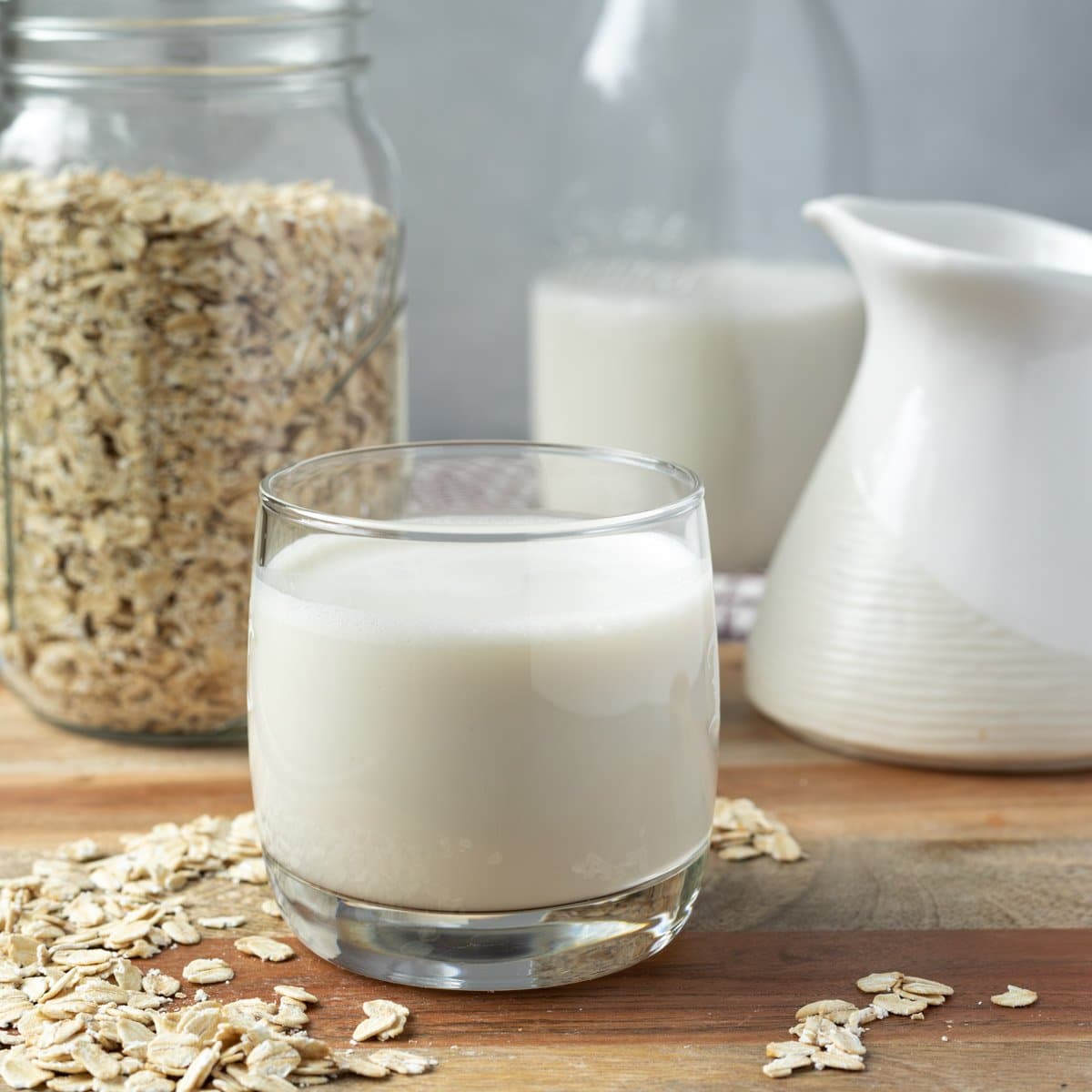Oat Milk With Enzymes (NEW and Improved Recipe!)
5.0
(28)
Your folders
Your folders
Prep Time: 7 minutes
Cook Time: 3 minutes
Total: 100 minutes
Servings: 4

Ingredients
Export 4 ingredients for grocery delivery
Instructions
Step 1
Pour the oats into a dry blender. Blend for about 5 seconds or until the consistency of a coarse flour. Pour oat flour into a large bowl.
Step 2
Open one digestive enzyme capsule and dump the powder into the bowl (discard the capsule).
Step 3
Heat the water to approximately 150°F (66°C). I like to microwave it in a large bowl. At this temperature water feels very hot but won't immediately scald you (I use this infrared thermometer).
Step 4
Pour the hot water into the bowl with the oat flour and enzymes, and stir well. For reference, use a spoon to taste the oat water (will be very bland). Set aside for 30 to 45 minutes. I like to stir occasionally during this time. After 30 minutes, taste the water again. It should now taste lightly sweet. If it doesn't, either the enzymes used aren't effective or the water wasn't the correct temperature. If you think the water was too cool, microwave the bowl for about 30 seconds to raise the temperature, and check again in 15 minutes.
Step 5
Rinse out the blender to remove any oat flour, and pour the oat-water mixture into the blender. Starting on low, quickly increase to high speed, and blend for about 10 seconds. We don't need to blend long since the oats were already broken down to flour. If not using a Vitamix or other high-speed blender, you may need to blend in two batches due to the large volume.
Step 6
Use a nut milk bag to strain the oat milk into a large heavy-bottom pot or saucepan. I like to place one nut milk bag inside another, for a double layer. Or you can strain it twice using the same bag (rinse in between uses). Since the starch has been broken down into sugars, it's fine to squeeze the bag and won't result in slimy oat milk. However, if you notice that it feels slimy while straining it through the bag, this means the enzymes did not work. Review the tips in the Notes section below before proceeding.Save the oat pulp for baking or add it to smoothies for extra fiber.
Step 7
Over medium heat and whisking frequently, slowly bring the oat milk to a simmer. Aim for 195 degrees F. If you don't own a thermometer, look for these visual clues: tiny bubbles around the edges and slight movement in the center. Whisking, maintain this low simmer for about 10 seconds, then remove from heat. Add a pinch of salt and the vanilla, if using.
Step 8
OPTION: add oil or cashews. Let the oat milk cool for about 20 minutes or until barely warm (so it's safe to blend on high speed). Rinse out the blender, and pour in the milk. If using cashews, simply blend with the milk until completely smooth. To add oil, while blending on high speed, remove the cap from the pour spout and slowly drizzle in the oil. Add the sunflower lecithin and blend for a few more seconds.
Step 9
Let the oat milk cool, and pour into a clean, lidded glass jar. Store in the refrigerator for up to 5 days.